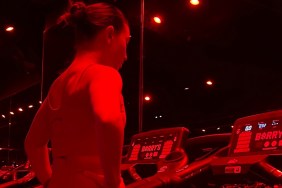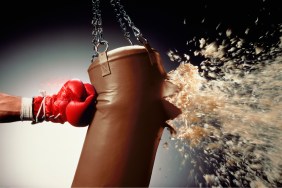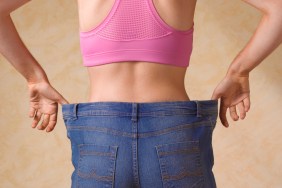It’s true that science and medicine have had their fair share of misjudgments. Every few years or so, a fad diet or exercise comes out that adds a new myth to our collective conscious about how to be healthy. Inevitably, some of those ideas prove to be false as we learn more about how our bodies work. There are a handful of workout myths based on former “facts” that some of us are still loyal to as we try to figure out the best way to be (and stay) healthy. Here’s a rundown of what you may be getting wrong at the gym.
Myth: Cool-down and Warm-ups Help Prevent Soreness
Australian researchers recently gave test subjects a workout that was sure to make their muscles sore the next day, but before they did it, they had some subjects do a treadmill walk warm-up, others were told to cool-down, and still others were instructed to do both while the control group did neither. Turns out, warm-ups and cool-downs don’t necessarily prevent soreness. A cool-down walk will help get your blood pumping back to normal levels, which might prevent lightheadedness, which not everyone is prone to. Welcome to shaving off your gym time by 20 minutes!
Myth: Thin People Don’t Need to Exercise
So many of us fall prey to this belief, even if we don’t like to admit it. For most, exercise is not fun so any excuse to skip it is approved of and readily believed. The truth is, exercise (and ridding yourself of excess fat) has so much to do with your overall health, not just how you look. If you don’t have enough muscle tone related to fat, you can still be at risk for the same diseases as those who are obese, regardless of your jeans size.
Myth: Pilates Will Give You Long, Lean Muscles
Remember when this idea came about several years ago? Pilates was the way to get that gorgeous, long, thin, ballerina body. Pretty good marketing on the part of Pilates proponents. The fact is, your muscles are as long right now as they’ll ever be. That’s determined by genetics, not exercise. If you’re looking to have a leaner look (as in more slender), try Pilates in conjunction with cardio and a healthy diet.
Myth: Crunches Are the Best Way to Work Your Abs
Chances are you already know this, but I thought I’d include it just in case. Studies have been conducted in which participants worked out their core with traditional crunches while others used ab exercises done with and on an exercise ball. One of the more recent studies happened in 2010 and was published in the Journal of Orthopaedic & Sports Physical Therap, according to MSN’s fitbie site. The study showed the “best” exercise for a six pack was the roll-out and pike (you can see it demonstrated via YouTube). These moves minimized strain on other parts of the body and maximized ab muscle work.
Myth: You Can Target Specific Body Parts Through Exercise
Don’t let the last bit of info fool you, thinking you can burn fat and tone just one part of your body is foolhardy. Your genetics and gender play a part in how your body burns fat, where, and in what order. While you can focus on strengthening a certain muscle group, don’t think that alone is going to turn that part of your body into perfection while the rest of you that you’ve deemed good enough stays as is. If you’re looking for better arms and abs, do arm and ab exercises, and legs, and cardio. Full body workouts are your best bet to getting your “lacking” area into shape the most efficiently.
Myth: There is a “Fat Burning Zone”
This one goes back to the 1980s when aerobics were all the rage. It’s simply not true. Even machines at the gym have ideal “fat burning zone” monitors, that’s how pervasive this myth has been. According to Maik Wiedenbach, a NYC-based trainer, the best way to burn fat quickly is through a mix of high and low intensity intervals. He also mentions that each individual body works differently, thus making it impossible for a machine to generically tell you when you’ve hit your “target zone.”
Myth: You Can Shed Pounds Just By Doing Cardio
So many women think all they have to do to shed a few pounds is do more cardio. No. No. No. Exercise actually offers little in terms of burning calories (that is compared to the effectiveness of consuming fewer calories that comes from healthy eating). While any exercise is better for your health than none, don’t expect weight to shed reasonably fast without also including a healthier diet and weight training in the mix. Working your muscles via strength training increases calorie burning between workouts and over time. A diet allows you to consume fewer calories, allowing your body to use up said calories for energy rather than fat storage. And cardio adds a little extra calorie burning action to the mix to aid in weight loss. The holy trinity of fitness (and weight loss) is cardio, strength training, and healthy eating.
Myth: Every Exercise Works for Everyone
If you’re using how much you sweat to determine your efficiency in exercise, you could be making a mistake. Again, it goes back to the individuality of each person’s metabolism, sex and genetics. Because we’re all different, there’s just isn’t one exercise that’s best for every person. Work hard, and regularly, to see results.
Myth: You Should Focus on Strength Training to Tone Up
Women love to talk about how they just want to “tone up.” It’s one of my personal mantras. But I’ve learned that it lends itself to misguided thinking. Your muscles are already toned, it’s the fat on top of the muscle that prevents anyone from seeing it. You’ve got to get rid of that fat to show what you’re working with. Part of that process is strength training, but without proper diet and cardio, the tone will remain hidden.







